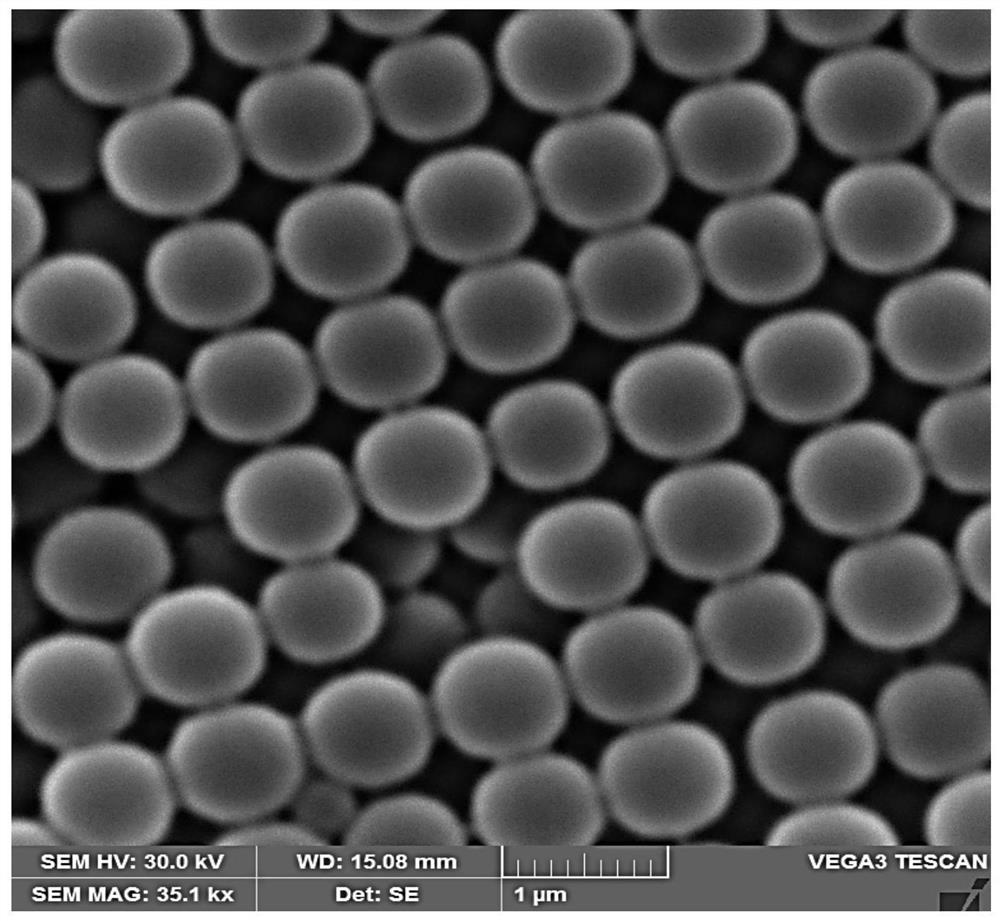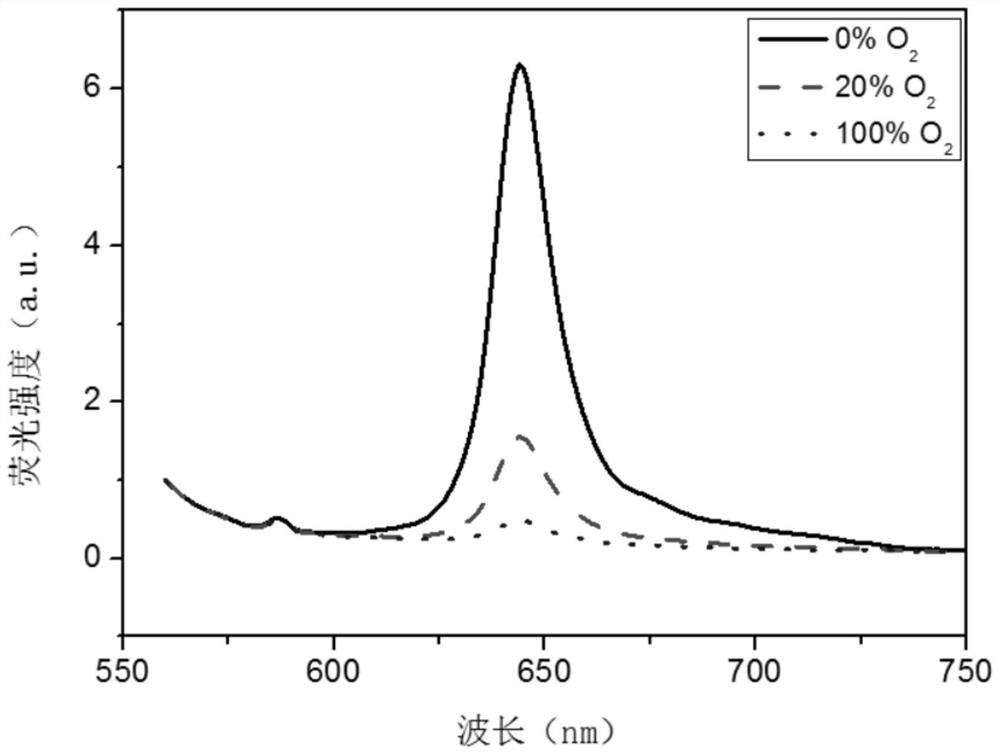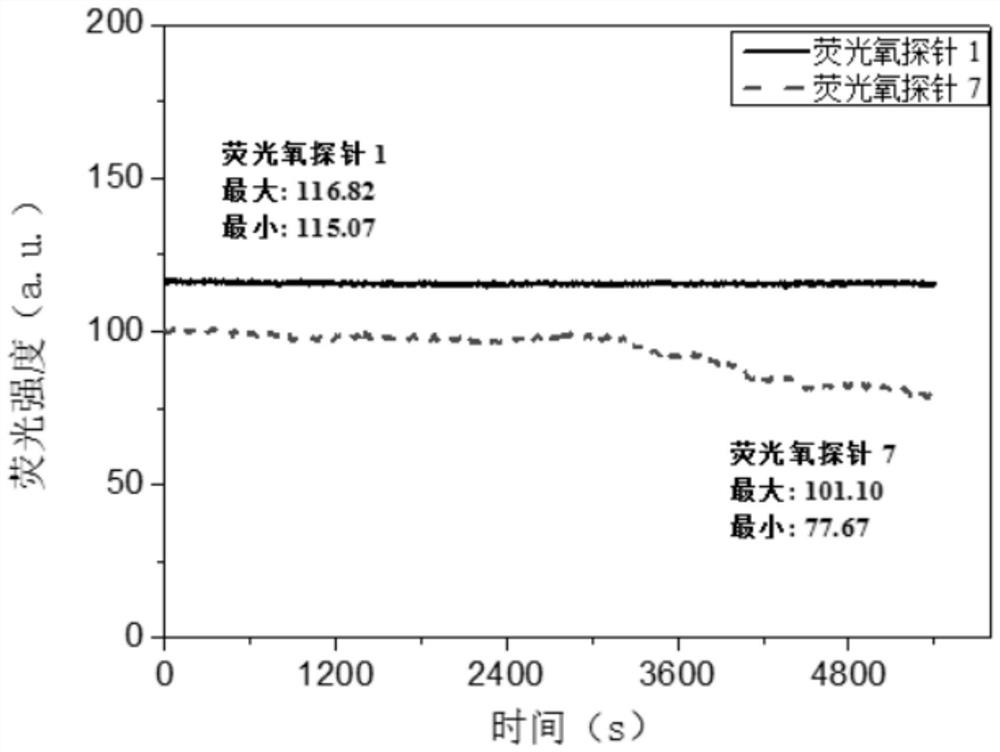A fluorescent oxygen probe and its preparation method and application
An oxygen probe and fluorescence technology, applied in the field of fluorescence detection, can solve problems such as photobleaching, accidental errors in detection results, and complicated operations
- Summary
- Abstract
- Description
- Claims
- Application Information
AI Technical Summary
Problems solved by technology
Method used
Image
Examples
Embodiment 1
[0048] Fluorescent oxygen probe 1 was prepared by the following steps:
[0049] Synthesis of the reference probe compound rhodamine B acrylate: 400 mg of rhodamine B and 261 mg of triethylamine were dissolved in 20 ml of tetrahydrofuran to obtain rhodamine B solution, and then 2 mL of tetrahydrofuran with 135 mg of methacrylamide dissolved in 0 Slowly drop into the rhodamine B solution in an ice bath at ~5°C, stir overnight at room temperature to react, pour the product into excess water after the reaction, extract with dichloromethane to obtain an organic phase, wash the organic phase with pure water three times, Anhydrous MgSO 4 Dried to obtain the crude product, the crude product was separated by silica gel column chromatography, with dichloromethane and methanol in a volume ratio of 95:5 as eluent chromatography to obtain 300mg dark red viscous substance, which is the rhodamine acrylate B ester, the reaction yield is 70.10%.
[0050] The hydrogen nuclear magnetic resonan...
Embodiment 2
[0054] Fluorescent oxygen probe 2 was prepared by the following steps:
[0055] The only difference with Example 1 is that the reference probe compound in step (1) is selected from (7-hydroxycoumarin) acrylate, the addition of the reference probe compound is 250mg, and the solvent of the reference probe compound is selected N,N-Dimethylformamide.
[0056] Example 2 Obtain the fluorescent oxygen probe 2.
Embodiment 3
[0058] Fluorescent oxygen probe 3 was prepared by the following steps:
[0059] The only difference from Example 1 is that tris(1,10-phenanthroline)ruthenium(II) is selected as the fluorescent oxygen probe compound in step (1), and the added amount of the fluorescent oxygen probe compound is 1 g.
[0060] Example 3 obtained the fluorescent oxygen probe 3.
PUM
| Property | Measurement | Unit |
|---|---|---|
| particle diameter | aaaaa | aaaaa |
| molecular weight | aaaaa | aaaaa |
| molecular weight | aaaaa | aaaaa |
Abstract
Description
Claims
Application Information
 Login to View More
Login to View More - R&D
- Intellectual Property
- Life Sciences
- Materials
- Tech Scout
- Unparalleled Data Quality
- Higher Quality Content
- 60% Fewer Hallucinations
Browse by: Latest US Patents, China's latest patents, Technical Efficacy Thesaurus, Application Domain, Technology Topic, Popular Technical Reports.
© 2025 PatSnap. All rights reserved.Legal|Privacy policy|Modern Slavery Act Transparency Statement|Sitemap|About US| Contact US: help@patsnap.com



